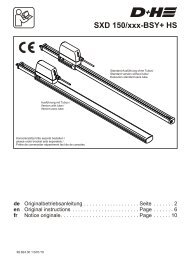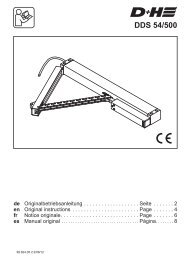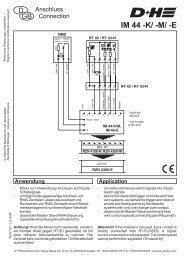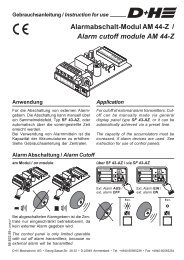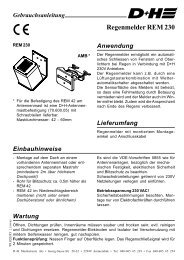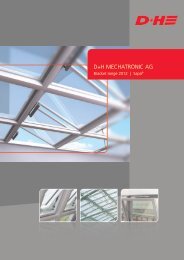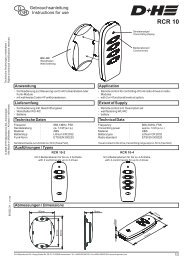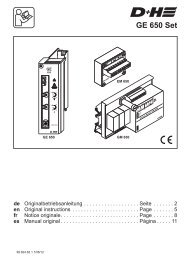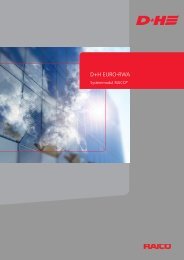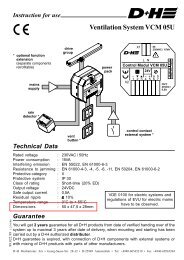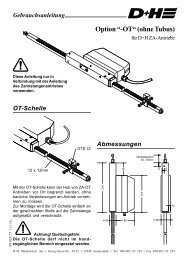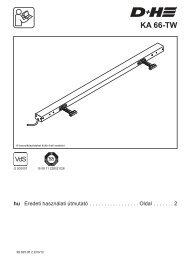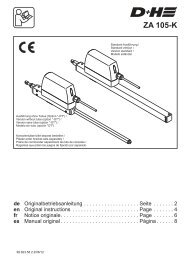Smoke ventilation according to EN 12101-2 - D+H Mechatronic
Smoke ventilation according to EN 12101-2 - D+H Mechatronic
Smoke ventilation according to EN 12101-2 - D+H Mechatronic
Create successful ePaper yourself
Turn your PDF publications into a flip-book with our unique Google optimized e-Paper software.
Manufacturer cooperation offers competitive advantages for both the window manufacturer and the <strong>D+H</strong> partner.Window manufacturer• Ability <strong>to</strong> procure Euro-SHEV solutions independent of the profile manufacturer• Large number of usable profile systems• Cost savings• Planning certainty and application reliability• The Euro-SHEV partner is responsible for the SHEV• No mark-up on <strong>D+H</strong> products• Euro-SHEV partner with extensive <strong>EN</strong>/SHEV expertise<strong>D+H</strong> Partner• Sales of drives and control systems• Installation and service provided• Development and consolidation of the distribution channel by the window manufacturer2.1. Initial type testing of the NSHEVInitial type testing of the product can be performed using one or more NSHEVs of the same product family. Onlythe test of reliability and the test under load must be performed on the same NSHEV. (see also 1.3.)2.1.1. Testing the reliability ReIn an initial stage of the test, dual-function NSHEVs are opened and closed 10,000 times <strong>to</strong> and from the <strong>ventilation</strong>comfort position. The NSHEV is not otherwise put under load. The performance class Re is then tested (thisis the first stage of testing for NSHEVs without dual function). In this stage of the test, the NSHEV is driven <strong>to</strong>the fully open smoke vent position in accordance with manufacturer data, e.g. 1,000 times for max. 60 seconds.As the standard does not define a minimum value for performance class Re, NSHEVs must be used that displaya minimum value of Re = 50. This value Re = 50 (47+3) was also required in the superseded DIN 18232-3.2.1.2. Testing the snow load SLIn the test for the snow load class SL, the NSHEV must be opened <strong>to</strong> its functional position within 60 s of a loadbeing applied and must then remain in position. This test must be repeated twice if it is successful.2.1.3. Testing the low ambient temperatureThe NSHEV must also open within 60 seconds at low temperatures (e.g. -10°C). The low ambient temperaturetest therefore also tests in particular the freeze behaviour of seals in addition <strong>to</strong> the load on the electromotivedrive.In this performance class, the NSHEV must achieve the value T(-05) as a minimum, which guarantees that theNSHEV will continue <strong>to</strong> function correctly even at this low temperature.Section A19



